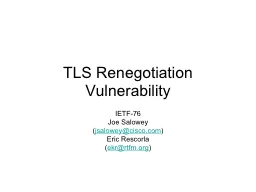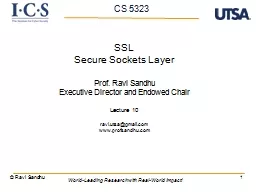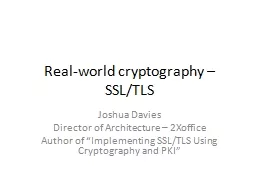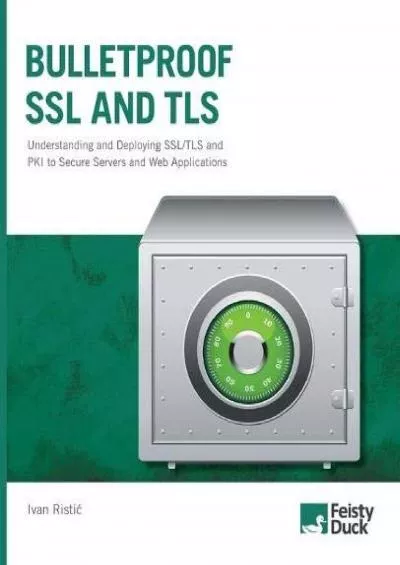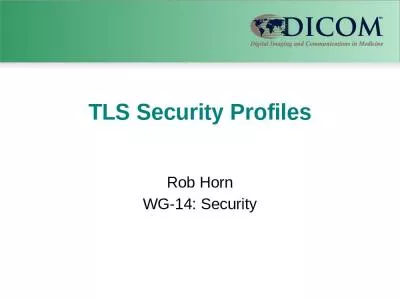PPT-SSL/TLS and HTTPS
Author : olivia-moreira | Published Date : 2017-10-04
Tyler Moore CS 7403 University of Tulsa Many slides adapted in part or whole from Dan Boneh Stanford CS155 and John Hale TU Goals for this lecture Brief overview
Presentation Embed Code
Download Presentation
Download Presentation The PPT/PDF document "SSL/TLS and HTTPS" is the property of its rightful owner. Permission is granted to download and print the materials on this website for personal, non-commercial use only, and to display it on your personal computer provided you do not modify the materials and that you retain all copyright notices contained in the materials. By downloading content from our website, you accept the terms of this agreement.
SSL/TLS and HTTPS: Transcript
Download Rules Of Document
"SSL/TLS and HTTPS"The content belongs to its owner. You may download and print it for personal use, without modification, and keep all copyright notices. By downloading, you agree to these terms.
Related Documents



